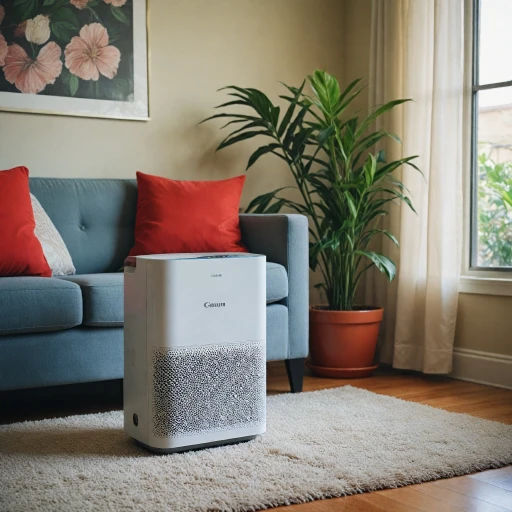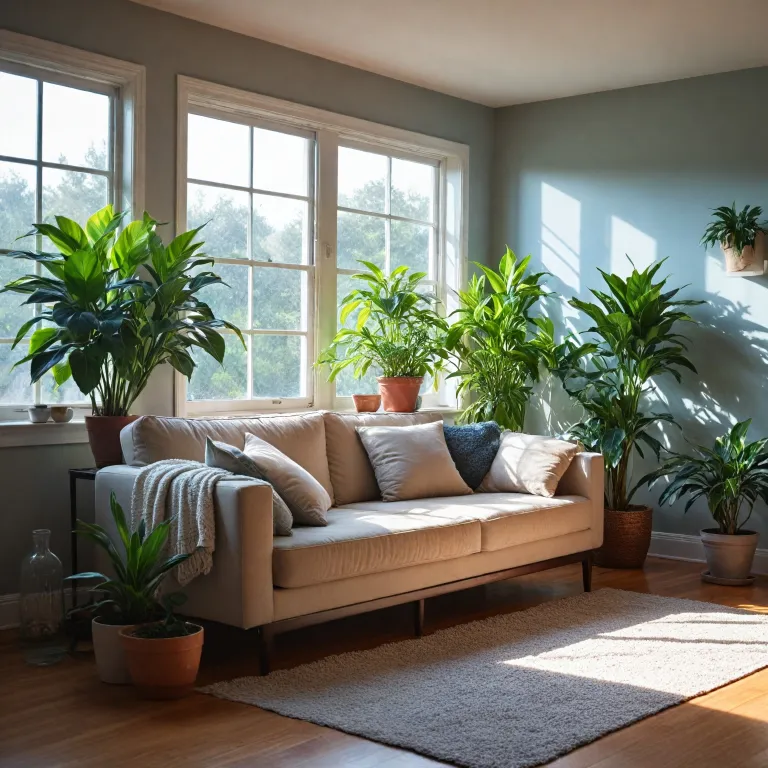Understanding how air purifiers work
The Basics of How Purifiers Operate
To understand if air purifiers cause dry air, it's helpful to comprehend how these devices function. At their core, air purifiers are designed to enhance air quality by removing particles such as dust pollen, bacteria, and even certain odors from indoor environments. This is typically achieved through a combination of mechanical and chemical processes.
- HEPA Filters: High Efficiency Particulate Air (HEPA) filters are a common component in many air purifiers. These filters are particularly efficient at trapping particles as small as 0.3 microns, ensuring that the air remains clean and fresh.
- Activated Carbon Filters: These filters are top-notch at adsorbing odors and volatile organic compounds (VOCs) that mechanical filters might miss, like the scent of cooked fish or a freshly painted room.
- Air Circulation and Filtration: Air purifiers circulate indoor air through these filters, ensuring that any particles are captured and removed. This constant circulation is crucial to maintaining air quality.
While many purifiers are a bundle of technology boasting HEPA and carbon filters, it’s important to note how they don't directly affect humidity levels. Air purifiers don't add or remove moisture from the air. Therefore, their operation shouldn't lead to dry air. For more insights into how air purifiers can tackle specific issues such as mold, you may want to consult
can an air purifier effectively tackle mold issues for additional reading.
Maintaining optimal indoor humidity levels often involves using a humidifier in conjunction with a purifier, especially in particularly dry climates. Yet, understanding the mechanics behind purifiers is the first step to demystifying their role in your home's air environment.
Air purifiers and humidity levels
Balancing Clean Air and Optimal Moisture Levels
When it comes to maintaining a comfortable indoor environment, understanding the relationship between air purifiers and humidity levels is crucial. Many wonder if air purifiers can inadvertently create dry air. The short answer is that air purifiers themselves don't directly reduce humidity levels; instead, their primary function is to improve air quality by removing particles like dust and pollen.
Air purifiers are equipped with filters, such as HEPA filters and activated carbon filters, designed to clean the air by capturing airborne pollutants. These filters excel at removing impurities but do not actually extract water vapor from the air. As a result, the presence of air purifiers in a home should not lead to a decrease in indoor moisture, although their operation can sometimes create the perception of drier air due to changes in air circulation.
If you're exploring whether an air purifier can reduce humidity levels, it's important to involve a device specifically designed for that purpose, like a dehumidifier. In cases where maintaining optimal indoor humidity is a concern, you might consider using a humidifier alongside your air purifier to ensure that your space remains balanced.
Before making any decisions, it may be beneficial to read more about whether an air purifier can technically affect humidity by following
this link.
Ultimately, while air purifiers improve air quality and enhance the cleanliness of indoor air, they do not inherently alter humidity levels. Coupling them with other devices tailored for humidity control can help to maintain optimal moisture levels in your home, ensuring both comfort and clean air.
Common misconceptions about air purifiers
Debunking Myths Around Air Purifiers and Dry Air
Many misconceptions exist about air purifiers, especially regarding their impact on indoor air humidity levels. One common myth is that these devices are responsible for making the air dry. It's crucial to understand that air purifiers are designed to improve air quality by filtering out dust, pollen, and other particles, but they do not add or remove moisture from the air.
Air purifiers work by circulating indoor air through filters, like HEPA filters and activated carbon filters, to remove pollutants and provide cleaner air for your home. However, this process does not inherently affect indoor humidity levels.
One key point to remember is that if you notice a decrease in moisture, air purifiers don’t deliberately cause this change. Instead, other factors might influence indoor air dryness, such as weather conditions or increased heating during colder months.
To enhance your understanding of how air purifiers function without affecting humidity, consider that these machines primarily target air quality, not moisture air. For those concerned about maintaining optimal humidity, pairing an air purifier with a humidifier may be beneficial.
Additionally, some air purifiers come bundled with advanced features like carbon filters to target specific contaminants, but again, these features are not linked to changes in humidity. For further insights into managing both air quality and humidity levels effectively, you might want to understand how to efficiently replace your dehumidifier filter, ensuring a balance in indoor air environment.
Educating yourself on how purifiers work will help dispel any myths and allow you to make informed decisions when choosing the right model for your needs.
Factors influencing indoor air dryness
Factors Affecting Indoor Air Dryness
Understanding the various factors that can influence the perception of dry air in your home is crucial in identifying the root causes. Many factors can impact indoor air dryness, and not all are directly related to air purifiers.
- Air Circulation: Proper air circulation plays a significant role in maintaining balanced humidity levels. Poor circulation can lead to pockets of stagnant, dry air, while adequate ventilation helps distribute air more evenly, mitigating dryness.
- Heating and Cooling Systems: Systems like HVAC units or space heaters can reduce humidity by ejecting moisture-rich air, which sometimes gives the impression that air purifiers cause dryness. It's important to monitor how these systems interact with air purifiers, especially if both are simultaneously in use.
- Environmental Humidity Levels: Humidity levels vary naturally according to the seasons and geographical location. In the winter months or dry regions, outdoor humidity levels are typically low, reflecting on indoor conditions. Monitoring the outdoor environment can be as crucial as controlling indoor devices.
- Material and Furnishings: The materials used in furnishing a home can also absorb moisture. Wood, for example, can draw humidity from the air when it becomes too dry, contributing to an overall feeling of dryness indoors.
- Using Humidifiers: Pairing a humidifier with your air purifier can ensure balanced moisture levels. Humidifiers add water vapor to the air, increasing the relative humidity to more comfortable levels, even in the presence of an ideal air purifier setup.
Recognizing these factors allows for a better understanding of how to manage your indoor environment and achieve superior air quality without inadvertently creating a dry or uncomfortable atmosphere. Applying such insights can help in maintaining the delicate balance necessary for a healthy home environment where both air purifiers and adequate humidity levels coexist.
Choosing the right air purifier for your home
Finding the Ideal Air Purifier for Your Needs
When it comes to selecting the right air purifier, understanding your specific needs is crucial. Different models are designed to cater to varying requirements, and factors such as room size, the presence of pets, or specific allergies can influence your choice. Knowing how purifiers work helps you determine which features are most essential for your home.
- Room Size and Coverage
- Choose an air purifier that matches the size of your room or living space. Most manufacturers specify the coverage area in square feet. Ensuring that the purifier can handle your room size is critical for optimal air circulation and cleaning efficacy.
- Types of Filters
- Air purifiers come with several types of filters, such as HEPA filters, carbon filters, and even bundle systems that combine multiple filtering methods. HEPA filters are effective for capturing dust pollen and other small particles, whereas activated carbon filters are excellent for removing odors and VOCs.
- Consider Additional Features
- Some air purifiers are equipped with features that improve humidity levels. Humidifier functionalities or moisture air add-ons can help in maintaining the indoor air moisture, reducing the risk of dry air issues. Models with built-in humidifiers can add moisture back into the air, balancing humidity levels.
- Noise Levels
- Check for reviews that mention the noise level of an air purifier. You want a model that operates quietly, especially if it’s intended for a bedroom or office.
- Energy Consumption
- Look for energy-efficient purifiers to keep your electricity bills in check. Units with energy-saving modes or timers can be more economical.
- Maintenance Requirements
- Take into account the maintenance needs, including the frequency of filter changes. Some models have washable filters, which can be more economical in the long run.
By assessing these factors, you can choose an air purifier that not only enhances your indoor air quality but also maintains optimal humidity levels, preventing dry air issues.
Tips for maintaining optimal humidity
Maintaining Proper Indoor Humidity
Maintaining the right humidity levels in your indoor environment is essential for ensuring comfort and air quality. Improper humidity levels can lead to dry air, a common concern among air purifier users. Here's how you can manage and maintain optimal indoor humidity:
- Monitor Humidity Levels: Use a digital hygrometer to keep track of your indoor humidity levels. Ideally, indoor humidity should be between 30% and 50%. If the levels are too low, consider using a humidifier to add moisture to the air.
- Choose the Right Air Purifier: Opt for an air purifier designed with features that help maintain humidity. Some purifiers come with a humidifier function, providing a dual benefit of cleaning the air and maintaining moisture levels.
- Regular Maintenance: Clean and replace filters as recommended to ensure your air purifier works efficiently. Filters, especially HEPA and carbon filters, help remove particles from the air without affecting humidity.
- Avoid Overusing Purifiers: Overusing purifiers don’t influence humidity directly but prolonged operation can lead to perceived dry air. Use your purifier sensibly to avoid unnecessary air circulation that might exacerbate dryness.
- Control Air Circulation: Balance the use of air purifiers and ventilation. Proper circulation can enhance air quality while preserving moisture levels indoors.
- Add Water Vapor: In cases of dry air, a simple bowl of water near heat sources can help introduce some water vapor into the air naturally.
These tips can help ensure your living space maintains healthy humidity levels while still benefiting from the clean air that air purifiers provide. By managing both air quality and moisture, you can create a comfortable and healthy indoor environment.

